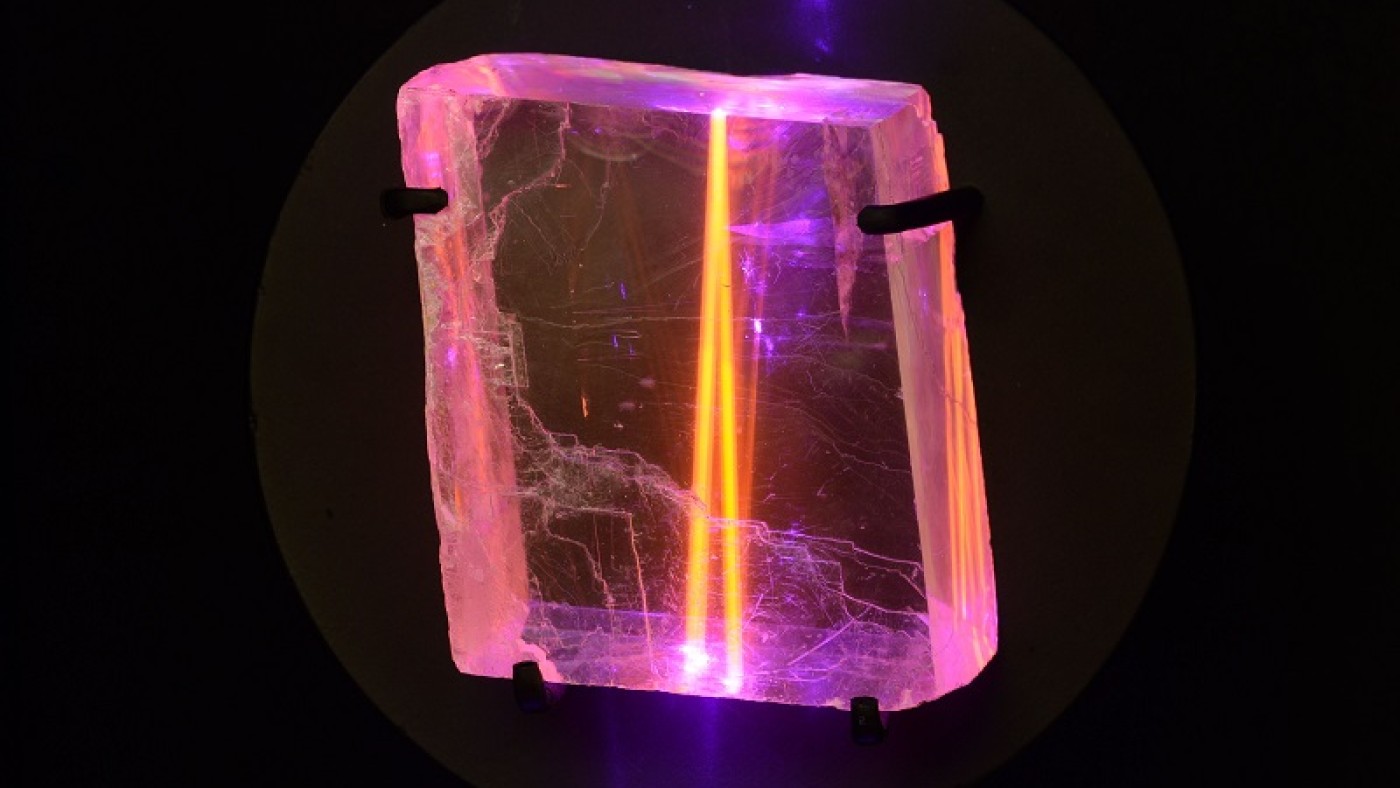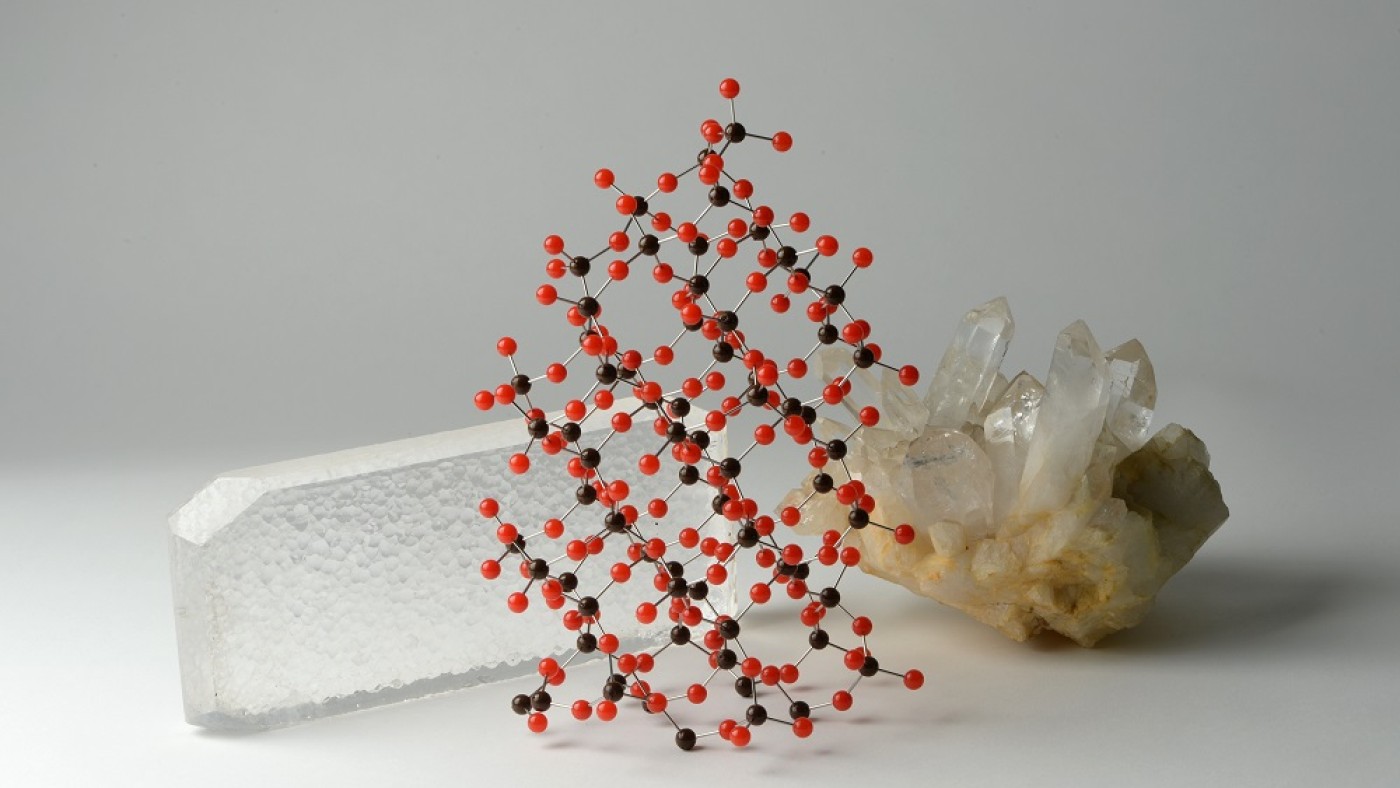World of Crystals
from 14. June 2023
New permanent
exhibition in hall 1.
14 June 2023 is the launch date for the new permanent mineralogy exhibition entitled “World of Crystals” in Hall 1
of the Natural History Museum (NHM) Vienna. After the extensive renovation and redesign of several display cases, the impressive
exhibition will demonstrate why crystals in all their symmetry and magnificent colours hold so much fascination.
With their regular symmetrical shapes, great diversity and colourful splendour, crystals have fascinated and captivated people for thousands of years. The exhibition offers a journey through the world of crystals, explaining crystal growth and optical phenomena such as double refraction (or birefringence) in calcite, dispersion of light on a faceted gemstone and the iridescence of opals.
In the course of the Earth's eventful geological history, almost all chemical elements have formed minerals. Their systematic classification is based on composition and symmetry: elements, sulphides and sulphosalts, halides, oxides and hydroxides, carbonates and nitrates, borates, sulphates, phosphates, arsenates and vanadates, as well as silicates.
These minerals include many important ores, such as the two iron ores haematite and magnetite, the lead ore galena and stibnite, the ore of antimony. Other minerals such as calcite, gypsum and clay are widely used as building materials, while others again serve as models for crystal synthesis due to their crystal structure. The silicon carbide called moissanite, which is very rare on Earth, is now produced synthetically. Its enormous hardness commends silicon carbide not only for use as an abrasive, but also as a semiconductor material for energy-saving chips in e-cars and as a wafer for circuit breakers. A methodical selection of current examples illustrates crystalline structure and the associated technical applications. Carbon, for instance, is by no means important only in the form of graphite, used as a lubricant, and in the form of diamonds. Today, we cannot imagine our everyday life without carbon taking the form of modern and ground-breaking materials such as graphene, nanotubes and fullerenes, which are synthetically produced forms of carbon whose crystal structure paves the way for special technical applications.
Dr. Vera M. F. Hammer, curator of the exhibition and head of the collection of minerals and gemstones at the NHM Vienna, masterminded the exhibition design together with architect DI Rudolf Lamprecht and the 7reasons media technology team.
With their regular symmetrical shapes, great diversity and colourful splendour, crystals have fascinated and captivated people for thousands of years. The exhibition offers a journey through the world of crystals, explaining crystal growth and optical phenomena such as double refraction (or birefringence) in calcite, dispersion of light on a faceted gemstone and the iridescence of opals.
In the course of the Earth's eventful geological history, almost all chemical elements have formed minerals. Their systematic classification is based on composition and symmetry: elements, sulphides and sulphosalts, halides, oxides and hydroxides, carbonates and nitrates, borates, sulphates, phosphates, arsenates and vanadates, as well as silicates.
These minerals include many important ores, such as the two iron ores haematite and magnetite, the lead ore galena and stibnite, the ore of antimony. Other minerals such as calcite, gypsum and clay are widely used as building materials, while others again serve as models for crystal synthesis due to their crystal structure. The silicon carbide called moissanite, which is very rare on Earth, is now produced synthetically. Its enormous hardness commends silicon carbide not only for use as an abrasive, but also as a semiconductor material for energy-saving chips in e-cars and as a wafer for circuit breakers. A methodical selection of current examples illustrates crystalline structure and the associated technical applications. Carbon, for instance, is by no means important only in the form of graphite, used as a lubricant, and in the form of diamonds. Today, we cannot imagine our everyday life without carbon taking the form of modern and ground-breaking materials such as graphene, nanotubes and fullerenes, which are synthetically produced forms of carbon whose crystal structure paves the way for special technical applications.
Dr. Vera M. F. Hammer, curator of the exhibition and head of the collection of minerals and gemstones at the NHM Vienna, masterminded the exhibition design together with architect DI Rudolf Lamprecht and the 7reasons media technology team.




